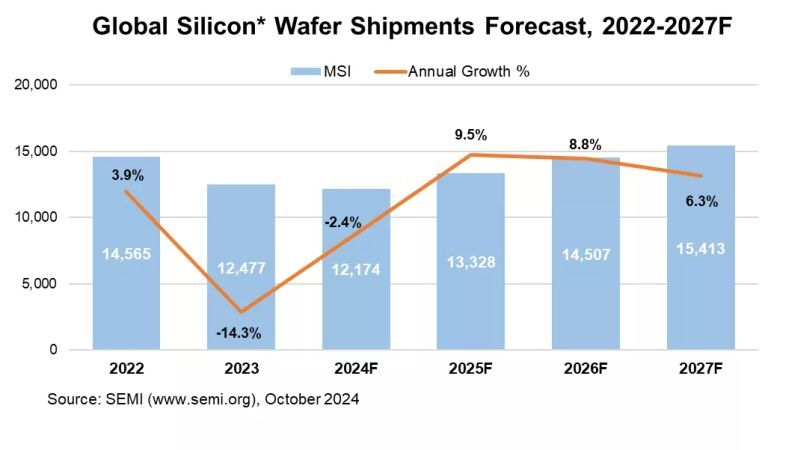The pandemic, with its rushing demand for electronic components, became a local peak of activity for the silicon wafers market, but after 2022, demand for them continued to decline. It fell 14.3% last year and risks falling another 2.4% this year before returning to growth in 2025, according to industry association SEMI.

Image source: SEMI
The source expects that no more than 12.174 billion square inches of silicon wafers will be shipped worldwide this year, but next year this figure will increase by 9.5% to 13.328 billion square inches. The growth in supply volumes of silicon wafers will be observed until 2027 inclusive, although it will slow down gradually: to 8.8% in 2026 and 6.3% in 2027.
The growth in demand for silicon wafers is driven not only by the boom in artificial intelligence systems, but also by the transition to the use of HBM type memory and multi-chip layout. The latter involves the use of additional components, the production of which also consumes silicon wafers.